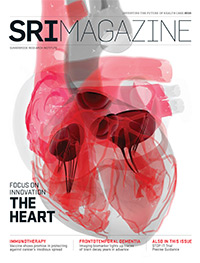Did You Know?
Facts about the heart and cardiovascular system
The Beat Goes On

Illustration: ©iStock.com/Pamela Moore
In Indiana Jones and the Temple of Doom, there is a scene in which the heart is ripped out of a sacrifice victim and continues to pulse vigorously as its previous owner is lowered into a pit of molten lava. Can the heart continue to beat outside the body or is this made-for-movies science fiction?
Most muscles depend on electrical impulses sent from the brain to be able to move and contract. The heart, on the other hand, can generate its own electrical impulses independent of the brain. This unique characteristic allows the heart to continue beating after being removed from the body. However, without blood vessels supplying oxygen to heart cells, the heart quickly runs out of oxygen and stops beating after a few seconds.
Go With the Flow

Illustration: ©iStock.com/ Bjoern Meyer
The cardiovascular system transports nutrients, gases and waste to and from cells in the body to maintain a stable environment and help fight disease. It comprises the heart, blood and three main types of blood vessels: arteries, which carry blood away from the heart; veins, which bring blood back to the heart; and capillaries, the smallest blood vessels, which allow exchange of water and nutrients between the blood and surrounding tissues. Stretched from end-to-end the blood vessels in an adult would measure roughly 97,000 kilometres—long enough to wrap around the earth two-and-a-half times.
Orchestral Manoeuvres of the Heart

Illustration: ©iStock.com/tzara
When a doctor uses a stethoscope to listen to your heart, what does he or she hear? Most commonly, it is the “lub-dub” sound produced when the heart’s valves close with each beat. When blood flow near the heart is particularly turbulent a whooshing sound can be heard. These sounds, known as heart murmurs, are often caused by a valve that is improperly sealed, narrowed or stiffened. Murmurs are the most common abnormal sound. Irregular heartbeats can also have a galloping rhythm, distinguished by the occurrence of an additional sound, “lub-dub-ta” or “ta-lub-dub.” In young or athletic people, a racing rhythm is likely harmless, but in older patients it may be a sign of heart disease.
Non sequitur
Dancers at the National Ballet of Canada pirouette through 120 to 150 pairs of pointe shoes per year. Depending on the role, one pair lasts two to eight hours.






